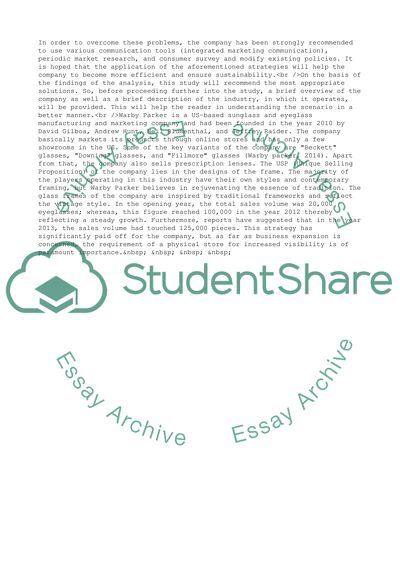Cite this document
(Challenges Warby Parker Facing Case Study Example | Topics and Well Written Essays - 3000 words, n.d.)
Challenges Warby Parker Facing Case Study Example | Topics and Well Written Essays - 3000 words. https://studentshare.org/management/1810754-what-are-the-marketing-challenges-facing-warby-parker-in-the-future-and-what-advice-would-you-give-the-company-on-how-to-face-them
Challenges Warby Parker Facing Case Study Example | Topics and Well Written Essays - 3000 words. https://studentshare.org/management/1810754-what-are-the-marketing-challenges-facing-warby-parker-in-the-future-and-what-advice-would-you-give-the-company-on-how-to-face-them
(Challenges Warby Parker Facing Case Study Example | Topics and Well Written Essays - 3000 Words)
Challenges Warby Parker Facing Case Study Example | Topics and Well Written Essays - 3000 Words. https://studentshare.org/management/1810754-what-are-the-marketing-challenges-facing-warby-parker-in-the-future-and-what-advice-would-you-give-the-company-on-how-to-face-them.
Challenges Warby Parker Facing Case Study Example | Topics and Well Written Essays - 3000 Words. https://studentshare.org/management/1810754-what-are-the-marketing-challenges-facing-warby-parker-in-the-future-and-what-advice-would-you-give-the-company-on-how-to-face-them.
“Challenges Warby Parker Facing Case Study Example | Topics and Well Written Essays - 3000 Words”. https://studentshare.org/management/1810754-what-are-the-marketing-challenges-facing-warby-parker-in-the-future-and-what-advice-would-you-give-the-company-on-how-to-face-them.


